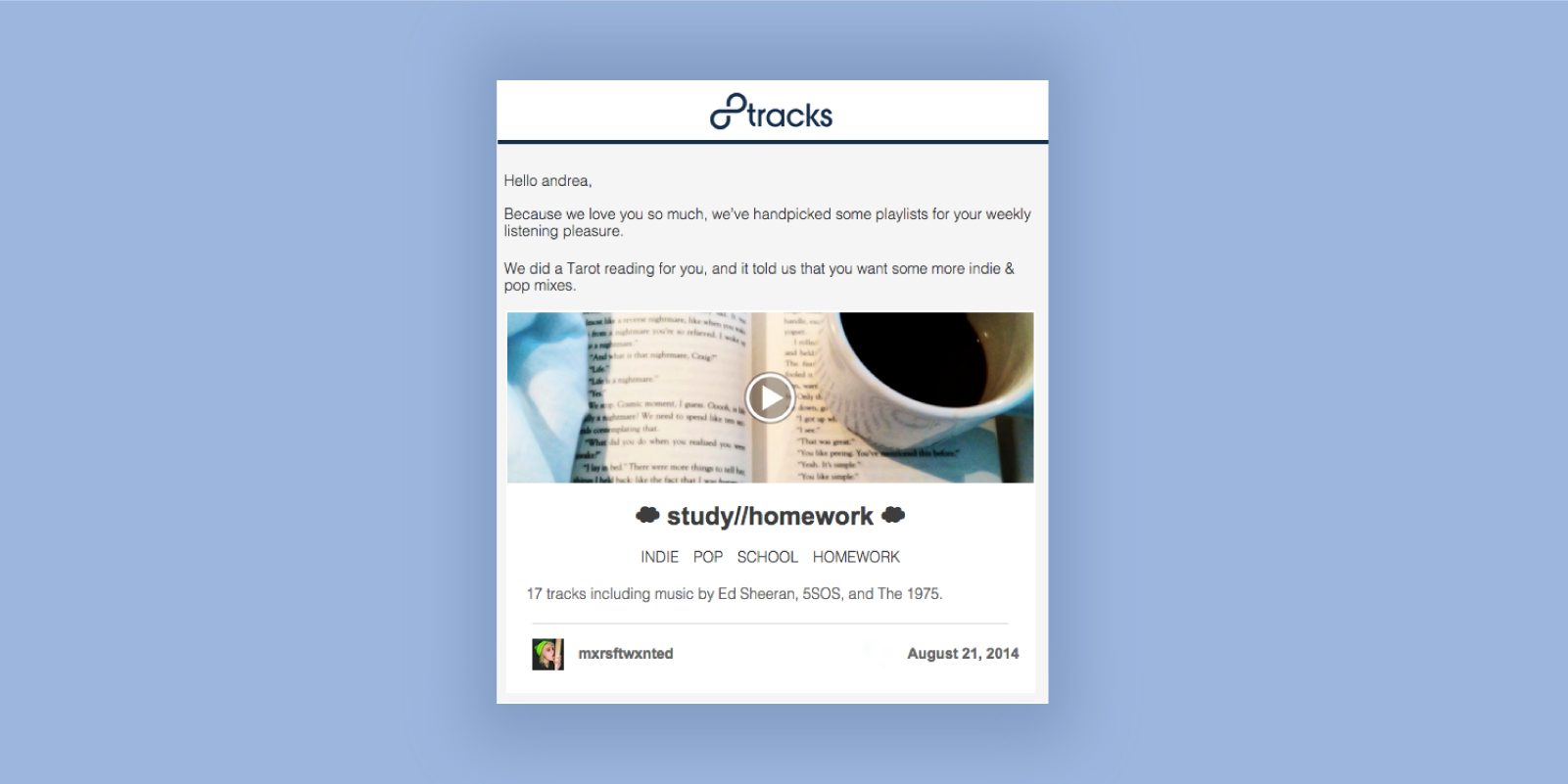Despite our frequent disapproval of newsletters, we understand that there is a certain need to maintain regular contact with users, even if they’re not constantly engaging. We know how hard it is to give up cold turkey, though, so one of the main goals of assembling our How to Email Like a Startup guide has always been to highlight and elaborate on great alternatives to the newsletter. So as we were putting together our most recent chapter on the best emails for user retention, we met with our friend Andrea over at 8tracks, to talk about what they did when they got rid of their monthly newsletter.
One really important thing that Andrea mentioned at the outset was that the newsletter was already being outperformed by almost every other type of email they were sending. This is not uncommon and totally in line with our own findings but, crucially, when they asked themselves, “How do we get people to read the newsletter?”, one of the proposed answers was “Make it… not a newsletter.”
The eventual form the solution took was the weekly digest. On its face, it sounds a bit like a newsletter but when you dig a bit deeper it actually has a really interesting, dynamic core. Realizing that they still had all this useful user data that was generating their much more effective emails, they came up with a hierarchy of possible content for the digest:
1) Personal recommendations based on past activity
2) Popular recommendations from their friend network
3) Curated staff picks
4) Overall popular content
This meant that depending on how much usage data they had for each given user, they could scale the level of recommendations provided. I think my favorite thing about this plan is that it subtly reinforces the value of spending more time using 8tracks. As they learn your tastes and your network grows, your weekly digest will drift farther away from what’s hot right now and more towards what you might really like.
The same ideas can be expanded into your own product, even if you’re not content focused. The key is to think about what usage information you have on your users – what do you know about your relationship that could improve the process by which you choose what to send them.
If you’re realizing right now that you haven’t really considered the value your newsletter provides to the users receiving it, we’re not going to call you out, just think on it. And if you need more ideas for what to do after you kill your newsletter, you can check out our How to Send Email Like a Startup guide.
